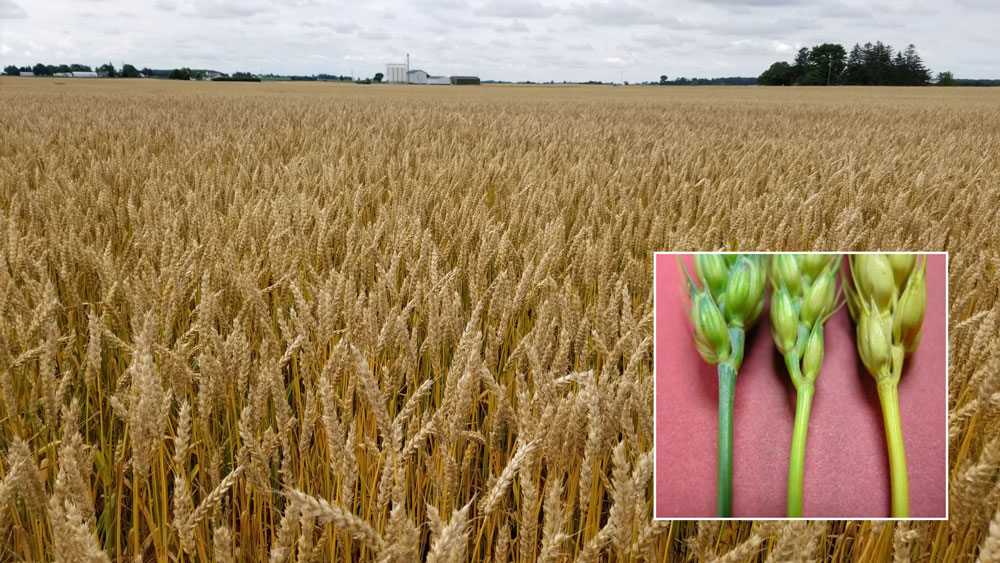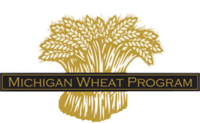Tips for help farmers optimize harvest
Michigan’s wheat harvest gets going in early-to-mid July, of course beginning in Southern Michigan and progressing north through the 50 counties where farmers typically grow wheat in their crop rotation.
Just ahead of harvest, the wheat plant reaches physiological maturity: That point where grain stops plumping up and the “dry down” period begins. No additional grain yield accumulates beyond this timeframe.
At physiological maturity, the peduncle (stem just below the wheat head) begins turning yellow. Grain moisture at this stage is 35-40%. It usually takes 10-14 days to dry down for harvest, depending on weather conditions. The wheat head line-up below shows a range of more to less mature wheat from left to right.

So, can a grower have any impact on wheat quality and yield at the time of harvest? The answer is: Yes! Read on for some tips from Michigan State University wheat systems specialist Dennis Pennington.
Food Quality. Of course, wheat is a food product. This means quality is very important to consumers and processors.
Several factors affect quality including vomitoxin (DON), sprout, test weight and dockage at the first point of sale. Most of these items can be managed at harvest to improve grain quality.
Before beginning to harvest, clean all vessels associated with it including wagons, trucks, augers, combines and grain storage areas. Clean away any potential contaminants such as spoiled grain, rodents, fertilizer or dirt in the equipment.
Review Combine Settings. Make the necessary adjustments to your combine to ensure you are harvesting clean grain of high quality. Dockage for hulls, green and shriveled kernels, weed seeds and foreign material has gone up in the past few years. Proper combine adjustments can help.
Scout Your Fields. Just before harvest go scout your fields. Check for Fusarium head blight (head scab), making note of which fields and which varieties are most infected. Check the lower leaf canopy for disease. Assess the level of lodging and potential lodging.
These notes will help you to make decisions about what fields to harvest first and also for variety selection for next year’s crop.
Here are some additional tips:
- Harvest fields with highest lodging potential first. Lodging varies by field and by year, but especially look for it on headlands where you likely have nitrogen overlap.
- Fields with Fusarium-susceptible varieties showing infection should be harvested at 20% moisture. Turn up the combine’s fan speed to blow shriveled/scabby kernels out the back and dry the grain. Some elevators will pay the drying charge if you start harvest early as that will increase grain quality. Shrink is a factor, but if you can reduce the overall DON score with this method, it could be the difference between a load being accepted or rejected.
- Calibrate yield monitors using multi-point calibration. This takes some time, but will provide you much higher quality yield maps to make other farm decisions such as variable rate nutrient application. Monitors should be calibrated annually for each crop. Click here to read more about multi-point yield calibration. canr.msu.edu/news/yield_monitor_calibration_procedure
- Set up the straw chopper to properly chop and spread straw the full width of your combine header. Proper residue management is important for every crop. Uniformity in distribution is the goal. Don’t “windrow” unless you plan to bale off the straw.
- Most importantly: Be safe! We know accidents happen quickly, sometimes when we’re rushing to get our work done. Take the time to be safe! Teach your kids and employees how to be safe while operating farm equipment. Tragedy can happen in a split second – don’t let it happen to your family.
Good luck harvesting those amber waves of grain!
